REGENHARDT GALLERY AT SHRODE ART CENTER
THE 35TH ANNUAL GATHERING OF QUILTS
August 3 – September 23, 2024
• Exhibit Open: Tuesday – Saturday 10:00 am to 5:00 pm & Sunday 1:00 to 5:00 pm
• Gallery Admission – Free
GATHER AT THE GALLERIES – EXHIBIT OPENING RECEPTION
Friday, August 2| 5:00 to 7:00 pm
Admission $10.00 | Cedarhurst Members – Free
• Open bar and appetizers | 5 to 6 pm
• Gallery hop to see the art and meet the artists | 5 to 7 pm
• Shuttle rides to Shrode Art Center | 6 to 7 pm
Programming
Bed Turning Program
Saturday, August 4 | 1:30 p.m.
Performance Hall | Free admission
Quilt Showcase
Cedarhurst Quilters Demonstration
Thursday, August 1 | 5:00 to 8:00 pm – during Thursday Night Live
All ages | Open to the public, free admission
ABOUT THE EXHIBIT:
Gathering of Quilts 2024
The 35th Annual Gathering of Quilts exhibition displays the creative talents of the Cedarhurst Quilters celebrating their love for sewing, fabrics, and the art of quilting with its long and venerable history. Traditional and non-traditional quilts colorfully adorn the walls of this striking exhibit held in the Beal Grand Corridor, Shrode Art Center, and Beck Family Center Gallery. This exhibit attracts quilt enthusiasts and visitors from all over the region and is always embraced as a community favorite.
The Cedarhurst Quilters meet the first Thursday of every month in the Mitchell Museum. During meetings they share their love for quilting, new ideas and information, participate in quilting workshops, discuss business, and work on charitable quilting projects. For more information about the club and their activities please contact Shrode Art Center Director, Carrie Stover 61-242-1236 ext. 249 carrie@cedarhurst.org


GALLERY SPONSORS:

EXHIBIT SPONSORS:
Bill and Sylvia Howard





